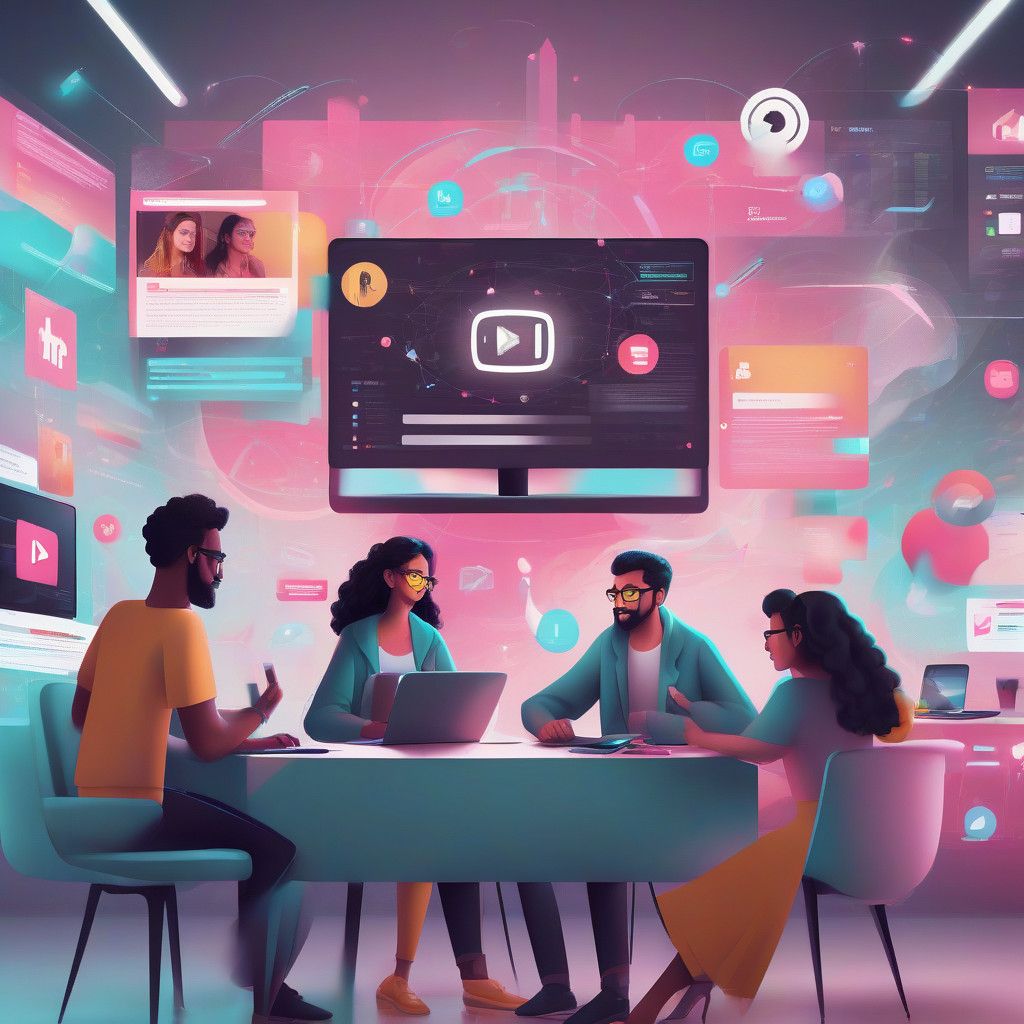In a strategic move to capture market share in the booming short-form video sector, YouTube has launched an innovative upgrade to its Shorts platform. The introduction of the AI-powered Dream Screen tool allows creators to generate dynamic video backgrounds using text prompts, elevating the creativity and production quality achievable within YouTube Shorts. Notably, the Dream Screen transformation extends beyond mere image generation, which has previously been the norm, marking a significant leap in content creation capabilities for users.
This feature utilizes Google DeepMind’s cutting-edge AI video generation model, Veo, capable of producing 1080p cinematic-style video clips. This development presents creators with the exciting opportunity to input descriptive prompts such as “magical forest” or “candy landscape” and receive a selection of visually stunning video backdrops tailored to their chosen animation style. This not only enhances the aesthetic appeal of their Shorts but also engages viewers in unique storytelling experiences.
Following the selection of an AI-generated background, creators can film their Shorts, integrating the animated backdrop as the visual canvas for their content. This opens avenues for developing imaginative narratives, allowing users to set their videos in fantastical settings or create vibrant animated openings. The potential for enhanced storytelling through visual engagement is profound, and the feature is poised to redefine how content is produced for short-form formats.
YouTube’s latest offering positions it squarely against TikTok, a dominant force in the short-form video landscape. Currently, TikTok only offers AI-generated background images, creating a stark contrast with YouTube’s comprehensive video backgrounds. The Dream Screen feature represents a concerted effort by YouTube to provide versatile tools that not only cater to creative demands but also solidify its status as a leader in digital innovation.
The rollout of the Dream Screen capability is currently limited to select regions, including the United States, Canada, Australia, and New Zealand. However, plans are underway for future updates that will enable users to generate standalone six-second video clips using Dream Screen. This capability could further enhance engagement by allowing creators to produce succinct, visually captivating content that can be consumed rapidly, a vital trait in catering to today’s fast-paced viewer expectations.
What makes this tool particularly attractive is its ability to enhance creativity while minimizing barriers for content creators. Individuals looking to express their storytelling abilities can do so without the need for sophisticated video production skills or expensive software. With just a text prompt and a few selections, users can create visually appealing videos that capture audience attention and convey ideas effectively.
The implications for marketers and brands cannot be understated. The rise in popularity of short-form video as a primary mode of content consumption means that platforms like YouTube are essential for brands aiming to connect with younger audiences. By utilizing the Dream Screen feature, brands can craft engaging advertisements that resonate more deeply with viewers, harnessing the emotional power of storytelling combined with stunning visuals.
Furthermore, YouTube’s commitment to competing rigorously with TikTok through such innovations suggests that the race for dominance in the short-form video sector is far from over. The platform’s continuous enhancement of its creator tools and the focus on user-generated content could lead to broader engagement and increased content quality. As creators adapt to these advancements, they may produce an influx of diverse and engaging multimedia content, further enriching the viewing experience on the platform.
Empirical evidence shows that videos with strong visual backgrounds see enhanced viewer retention and interaction. As an extension of its longstanding relationship with content creators, YouTube has once again demonstrated its responsiveness to the evolving landscape of digital media. The Dream Screen tool serves as a testament to YouTube’s aim to foster creativity while responding to user needs in an increasingly competitive market.
In conclusion, as YouTube rolls out this innovative feature, it not only challenges TikTok’s current supremacy but also sets the stage for a new wave of digital storytelling. As users navigate this exciting new capability, it will be fascinating to observe how the creation of AI-generated video backgrounds shapes the content landscape on YouTube Shorts and influences competitive dynamics within the social media realm.












